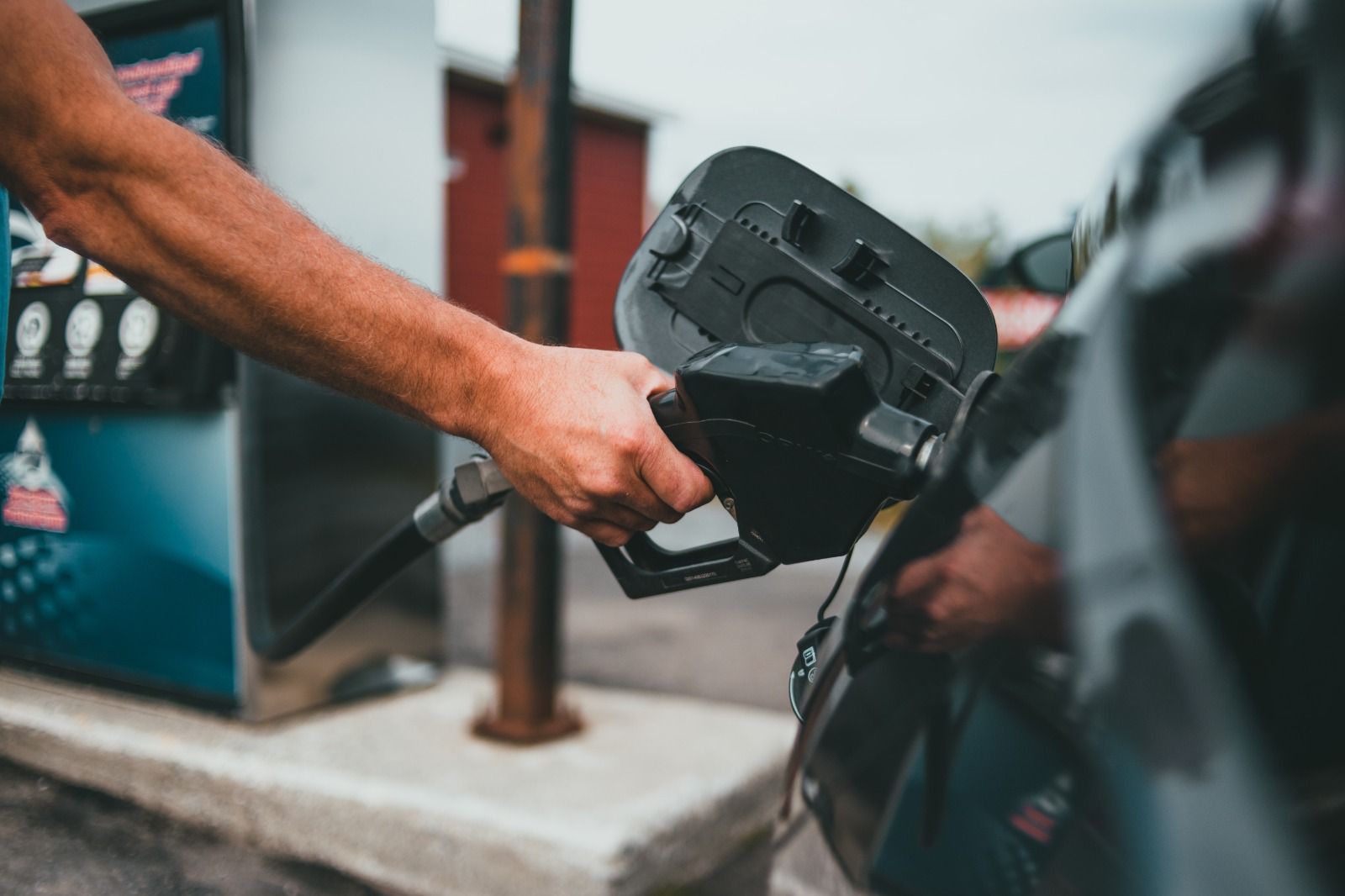Northeast Energy Scenario Part-1: Paradigm shift in petroproduct availability and consumption
Pratim Ranjan Bose
Post On > Mar 28 2023 1609

Energy and infrastructure are two critical elements for growth and prosperity. IRCC has been consistent in shedding light on the spate of developments in India’s northeastern region, which suffered from a paucity of both in the past.
In this episodic report, we will explain the paradigm shift in the region’s energy landscape over the last decade. In part-1 we are dealing with the petroleum product availability and consumption in the Northeast.
Till 2014, when the Narendra Modi government assumed power in Delhi, energy scarcity was a common theme in the eight Northeastern states of Assam, Arunachal Pradesh, Manipur, Nagaland, Mizoram, Meghalaya and Sikkim; comprising nearly 8% of India’s area and less than 4% of the national population (Census 2011).
The gap between the regional and the national averages was evident in almost all segments of energy products and commodities.
Table-1: LPG coverage in NE between March, 2014 and January 2023
| State | Domestic LPG connections 31.03.2014 (million) | LPG coverage on 31.03.2014 as percentage of households | Active* Domestic LPG Connections 01.01.2023 (million) | LPG coverage on 01.01.2023 as percentage of households | No of household as per Census 2011 (million) |
| Arunachal Pradesh | 0.22 | 81.1 | 0.31 | 114.8 | 0.27 |
| Assam | 3.15 | 49.2 | 8.35 | 133.2 | 6.40 |
| Manipur | 0.36 | 70.5 | 0.65 | 127.4 | 0.51 |
| Meghalaya | 0.17 | 31 | 0.04 | 74 | 0.54 |
| Mizoram | 0.27 | 122.7 | 0.34 | 154.5 | 0.22 |
| Nagaland | 0.22 | 56 | 0.33 | 84.6 | 0.39 |
| Sikkim | 0.13 | 108 | 0.17 | 141.6 | 0.12 |
| Tripura | 0.40 | 47 | 0.79 | 92.9 | 0.85 |
| NER | 4.92 | 52.7 | 11.34 | 121.5 | 9.33 |
| India | 166.25 | 67.3 | 313.71 | 127.1 | 246,74 |
*Active indicates, the subscribers take a minimum of two refills a year.
Source: Absolute LPG connection data from Indian Petroleum and Natural Gas Statistics 2014-15 and Petroleum Planning and Analysis cell of ministry of petroleum and natural gas, GoI. Household Data from Census, 2011. Compilation by author.
LPG
As of March 2014, hardly 71% of Indian households had access to cooking gas including both liquefied petroleum gas or LPG (67%) and piped natural gas (PNG) supplies in Gujarat, Delhi, Mumbai etc. The situation was worse in the northeastern region (NER), which reported a distinctly lower average. The gap was most evident in Assam (31.2 million) and Tripura (3.6 million) – together accounting for 76% of the regional population (45.7 million).
Notably, the historic data on domestic LPG was inflated, due to dual pricing and rampant diversion of subsidized cooking gas for households to commercial usages (as in eateries). The Modi government plugged the loopholes by ensuring one market price for LPG. The subsidy was reimbursed to domestic consumers through direct benefit transfer (DBT).
Either way, access to cooking gas improved dramatically in the last nine years. As of January 2023, India (127%) achieved full coverage of LPG in households. NER (121.5%) kept up with the national trend. From 49% in 2014, Assam is now operating at 133%, higher than the national average. Tripura is closer to full coverage. Even Meghalaya gave up its fascination for locally available coal for gas.
Petroleum Products
LPG was no exception.
A comparative analysis of per-capita sales of petroproducts between the financial year 2013-14 (FY14) and the pre-covid year of FY20 will tell, access to energy is increasing at a faster pace in NER than the country (see Table-2). We have kept FY21 and FY22 data out of context, as the covid related restrictions on mobility affected auto-fuel sales during the period.
Except for Assam, other states in the region are too small. Meghalaya and Sikkim are top tourist destinations. Arunachal and Sikkim have a disproportionate presence of armed forces. And, a substantial population of cars from Assam, refill in Meghalaya due to price arbitrage.
Keeping this in mind, it is better to focus on Assam where per-capita sales of petroproducts rose by 50% against a national average of 28%. From 49% of the country average in FY14, Assamese consumption improved to 57.5% of the Indian average in FY20. The residual gap is attributed to the lack of industrial activity.
A dramatic rise in the retail network of oil marketing companies, ensuring the availability of petroproducts in the region, is a primary reason behind the rise in consumption. Between FY17 and FY22, the retail network grew by 39% in the country vis-à-vis 58% in NER (see Table-3). The growth of network is faster in remote states of Arunachal Pradesh, Manipur, Mizoram and Nagaland – which once had very little coverage.
As of FY27, Sikkim and Meghalaya were amply covered compared to their small population.
Table-2. Per-capita sales of petroleum products
| State | 2013-14 (KG) | 2019-20 (KG) | Growth (%) |
| Arunachal Pradesh | 123.7 | 190.5 | 54 |
| Assam | 60.3 | 90.6 | 50 |
| Manipur | 60.3 | 93.6 | 55 |
| Meghalaya | 158.1 | 185.7 | 17 |
| Mizoram | 94.7 | 129.2 | 36 |
| Nagaland | 60.8 | 86.6 | 42 |
| Sikkim | 156.7 | 214.1 | 37 |
| Tripura | 49.3 | 63.1 | 28 |
| NER | 95.4 | 131.6 | 38 |
| All India | 122.9 | 157.5 | 28 |
| Eastern Indian States | |||
| Bihar | 38.3 | 52 | 36 |
| Jharkhand | 76 | 103.6 | 36 |
| Odisha | 87.6 | 143.7 | 64 |
| West Bengal | 74.4 | 101.9 | 37 |
| ER | 69 | 100.3 | 45 |
Source: Indian Petroleum and Natural Gas Statistics for 2014-15 & 2021-22, Ministry of Petroleum and Natural Gas, GoI.
Table-3: Number of retail outlets of petroleum products
| State | 2016-17 | 2021-22 | Growth (%) |
| Arunachal Pradesh | 74 | 178 | 140 |
| Assam | 828 | 1312 | 58 |
| Manipur | 85 | 178 | 109 |
| Meghalaya | 198 | 270 | 36 |
| Mizoram | 37 | 72 | 94 |
| Nagaland | 70 | 150 | 114 |
| Sikkim | 50 | 63 | 26 |
| Tripura | 68 | 108 | 59 |
| NER | 1410 | 2231 | 58 |
| India | 59595 | 83027 | 39 |
Source: Indian Petroleum and Natural Gas Statistics 2021-22, Ministry of Petroleum and Natural Gas, GoI.
Conclusion :
Petroproduct shortages are a thing of the past in the Northeast. This is visible even in daily life experiences.
“There was a time when we used to file a lot of reports on fuel shortages in the region. There were few auto-fuel refill stations beyond the city limits. People selling petrol and diesel, at a premium, in plastic water bottles, was a common sight outside major towns and cities. LPG crisis was a recurring theme. Those days are now gone,” said Bikash Singh, The Economic Times correspondent in Guwahati.
Singh now rarely files reports on energy shortages. In 2022, Assam suffered one of its worst flood situations in history. Multiple waves of flooding destroyed key rail and road links, inundated cities and towns and killed hundreds. The breach of a dyke in the Barak river, kept Silchar (Assam) submerged for weeks. But, fuel supplies didn’t stop.
*Pratim Ranjan Bose is a commentator, researcher and corporate consultant. He is ‘Lead-Research’ of IRCC.
** Photo by Erik Mclean on Unsplash

Northeast Energy Scenario Part-1: Paradigm shift in petroproduct availability and consumption
2023-03-28 16:22:05

Consolidation of 'indigenous' votes aligned Tripura's political landscape with the rest of the northeast.
2023-02-16 08:51:53

Why Kolkata doesn’t have a Unicorn ?
2023-01-28 09:53:57

Social media literacy should be mandatory in UG curriculum
2022-11-30 12:00:53

India's new CDS, Gen Anil Chauhan has a daunting task ahead!
2022-09-30 10:34:59

Make annual BBIN summits a norm, create a common market for food and services
2022-08-13 10:39:02
Reach Millions with Confidence: Security is paramount when it comes to your marketing efforts. Contact Form Leads prioritizes data security while maximizing your reach. Our secure contact form bulk submission process ensures your message lands safely in email inboxes, providing trust and credibility with potential clients. Reach millions with confidence, knowing your data is protected. Get started with Contact Form Leads for just 9 usd! ++ Check out now: https://bit.ly/bulksubmussions Unsubscribe here if you don't want to get these amazing newsletters: https://bit.ly/listunsubscribe Stationsstraat 8, Itegem, VAN, US, 2222
Looking for a VPS solution that combines power and flexibility? Our VPS plans come with up to 5 Gbit/s connectivity and 50TB of monthly traffic, starting at just €3.90. Select from our tailored plans: €4.90/month 2x AMD EPYC vCore, 8Gb RAM, 80GB NVMe Disk Space, €7.90/month: 4x AMD EPYC vCore, 16GB RAM, 120GB NVMe Disk space €11.90/month: 6x AMD EPYC vCore, 24GB RAM, 180GB NVMe Disk space Included in all plans: 5 Gbit/s connectivity 50 TB traffic/month KVM / ISO mount Compatible with Linux, Windows, and BSD Easy upgrades/downgrades via UI 5 Snapshots and 1 Backup slot Adapt your VPS to your needs with our seamless up/downgrade options. Experience unmatched flexibility and high performance. Get started: https://bit.ly/vps5eur Unsubscribe here if you don't want to get these awesome offers: https://docs.google.com/forms/d/e/1FAIpQLSfqamyB6byPaAwgcS6ofGmo4N4Pqkn2ZutAk6aInDQ_WhohRg/viewform Via Solfatara 75, Long Beach, New York, US, 83040
Do you need funds to boost your business? We will provide loans and amplify growth and supercharge returns on your business. Now you have the Chance to Obtain Financing for your Businesses and Projects without stress and any obligation of repayment as our primary interest is in fostering the growth of your business and projects, allowing you to realize your desired business goals and dreams. Take advantage of our fast Funding offer and get funding for your enterprise and projects within days, with a generous number of years for repayment, providing you sufficient time to grow and reach your business goals. We are a registered and reputable HK company with international accreditation. Please reply to: customersupport@capitalfund-hk.com or Contact us at: +852 3008 8373 Unsubscribe here if you don't want to get these awesome offers: https://form.jotform.com/241311404065442 37 Moores Drive, Rome, New York, US, 6005
Iravati Research and Communication Centre LLP (IRCC) is a Kolkata-based think-centre, engaged in research and policy advocacy.
Useful Links
Email : info@ircc.in
Copyright © 2020 - IRCC - All rights reserved. Developed by Thinkbizz Marcom PVT LTD
Complaint Registration
Terms of Usage
IRAVATI RESEARCH AND COMMUNICATION CENTRE LLP, a limited liability partnership (LLP Identification No. AAO-4910) registered as on 11-03-2019, having registered address at 1050/2, Survey Park, Flat No.- B 8/10, Cal-Green, MIG-B, Phase-II, Kolkata-700075, India.
The mentioned Terms for the usage may apply to the functional website that you have viewed within www.ircc.in before clicking on these Terms of Use. This single website is referred to in this Terms of Use as "this Website."
Thereby using the website, you agree to these Terms of Use. Whereas if you do not agree to these Terms of Use, you are not permitted to use this website, and you must terminate your use immediately.
The "Iravati Research and Communication Centre Network" refers to the Iravati Research and Communication Centre LLP ("IRCC"), IRCC member firms, and related organizations.
The Iravati Research and Communication Centre LLP is an organization within the IRCC Network that provides this website and is referred to by these Terms of Use as "we", "We", or "our". While parts of these Terms of Use may refer to other features of the Iravati Research and Communication Centre Network, these Terms of Use are between you and us and not from any of those other organizations.
This website provides you with other features (free) of cost and better browsing. Furthermore, the user can choose to apply an additional part by subscribing to this website to their device with notifications.
htmlFor the sake of clarity, this website includes additional features, if any, (i) they do not solicit any form (ii) they are not intended to provide any service or product to users anywhere (iii) sponsor any services, advice or product and the user is required to exercise his / her understanding. , where necessary.
Content usage; Limitations; Privacy Statement
Notwithstanding otherwise expressing relevant content, and provided that you comply with all of your obligations under these Terms of Use, you are authorized to view, copy, print and distribute (but not modify) the content on this website; provided that (i) such use is htmlFor informational, non-commercial purposes only, (ii) any copy of the content you are making must include a copyright notice or other aspect of the content and, (iii) appropriate courtesy and proper referencing to the website should be given.
Intellectual Property Rights :
No use of the words or logos of the Iravati Research and Communication Centre has been permitted unless otherwise mentioned.
The content on this website is the original work and content of IRCC or any other entities within the IRCC network. We and our licensors retain all rights not expressly granted in these Terms of Use.
"Iravati Research and Communication Centre",the logo of Iravati Research and Communication Centre, and local language used above, and certain product names appearing on this website (collectively, "Iravati Research and Research Centre Marks"), are intellectual and intangible properties of Iravati Research and Communication Centre.
Unless provided in these Terms of Use, you are not consented to use any Iravati Research and Communication Centre Signs alone or in combination with other brands or building materials, including, in any media, advertising, or other promotional or marketing materials. or media, either in writing, orally, electronically, visually or in any other way.
Any view published on the website as presented by any personnel should be considered as the expression by the personnel only and not the standpoint of the organisation.
All contents of this website are original content and belongs to the Iravati Research and Communication Centre Network.
The trademarks of other parties to this website are htmlFor the sole purpose of identifying and not indicating that these individuals have endorsed this website or any of its content. These Terms of Use do not entitle you to use any of the trademarks of any other party.
Disclaimers and Limitations of Liability
This website, without limitation, any content or other part thereof contains general information only, and is the original content of the owner of this website. It should not be considered as per htmlFor providing advice or any other services. Before deciding or taking action that could affect your money or business, you must show it to the appropriate professional.
We abstain from declaring that the website will be a secured one, free from errors or any viruses or malicious code, and may meet with any particular standard of performance or quality as per customized.
The usage of this website is at the user's personal risk, and the user adheres to anticipate full duty and danger of loss due to your usage, consisting of, without limitations, with respect to loss of factual data or any other data. Any direct, oblique, unique, incidental, consequential, or punitive damages or some other damages in any way, whether or not in a motion of settlement, statute, tort (such as, without challenge, negligence), or otherwise, relating to or springing up out of the usage of this website, should not be the responsibility of the owner of the website.
Without prescribing any of the foregoing, we make no explicit or implied representations or warranties in any way regarding such websites, resources, and gear, and hyperlinks to such a website, sources, and equipment must not be construed as an endorsement of them or their content by using us.
The above-mentioned clauses and renunciations along with the liabilities are subject to the maximum extent as granted by the Law, as in the case of contract, statutes, tortuous liability or otherwise.
Complaint Resolution System
A Complaint Resolution System has been set up as per the Information Technology (Guidelines for Intermediaries and Digital Media Ethics Code) Rules, 2021.
Any complain regarding the digital content on this website should be processed through the Complaint Resolution System via the company website.